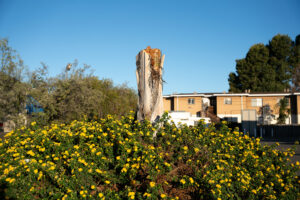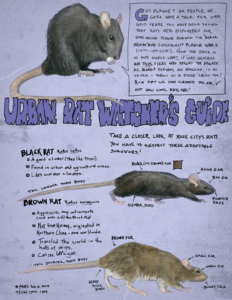Parking the car in front of my house a few weeks ago, I noticed movement across the street. It was a deer—a mature doe, I believe—walking up the sidewalk in the early evening twilight. Aware of my presence, but not spooked by it, she passed between two parked cars and ambled up the street.
I live on a lightly traveled side street in north Berkeley. But there are major streets at each end, and a shopping district two blocks away. The only local park is a school yard down the street. Not exactly prime wildlife habitat. I used to assume that the occasional deer in my backyard had wandered down from Tilden Regional Park in the hills above and become disoriented and lost. But I have encountered deer more frequently over the past few years, both on the street (still a surprise for me) and in the “greenbelt” of backyards behind my house. So disorientation can’t adequately explain their almost-regular presence.
How fortunate, then, that writer and amateur deer observer Bruce Morris came along with his intriguing article on suburban deer (see “The Deer Next Door” on page 18). Apparently, Columbian blacktails (our local species) have managed to adapt, shrink, and superimpose the template of their preferred spatial arrangements on the network of yards and neighborhood parks they find in semiurban or suburban Bay Area communities. It makes sense. There is plenty of nutritious forage inadvertently provided by avid gardeners; the backyard trees and shrubs afford cover; and there are few predators (no hunters; no mountain lions—yet) aside from the occasional reckless driver. Still, it’s surprising to see such large animals in such a built-up landscape.
At the other end of the spectrum, there’s the Anna’s hummingbird that perches in plain view on the topmost branch of the mulberry tree across the street. Belying stereotypical hummingbird be­havior, this fellow (the red gorget marks him as such) spends much of his morning sitting on this branch, now and again jetting off for a quick foray, then just as quickly shooting back in a beeline to his favored perch. I’ve heard that Anna’s hummingbirds used to migrate in the winter, but now they stick around, thanks to the exotic flowering plants we humans have introduced. This one (or another like him) has appeared on that branch for at least five years now, from fall through spring. I don’t know where he goes at night, and I’ve never seen a nest in the tree. But clearly this is a successful spot for this tiny bird who has also managed to impose the template of his survival needs on the mixed habitat of this semiurban side street.
I haven’t followed Bruce’s example and undertaken a study of my neighborhood species. But I do find that in recognizing the behavioral patterns of the wild animals around my house, I have come to feel more like a fellow member of a shared ecosystem than simply an interloper in their world or a lucky participant in random encounters. This sense of being a part of the natural world right where you live is, I hope, one of the many benefits you too will take from this and other issues of Bay Nature.




